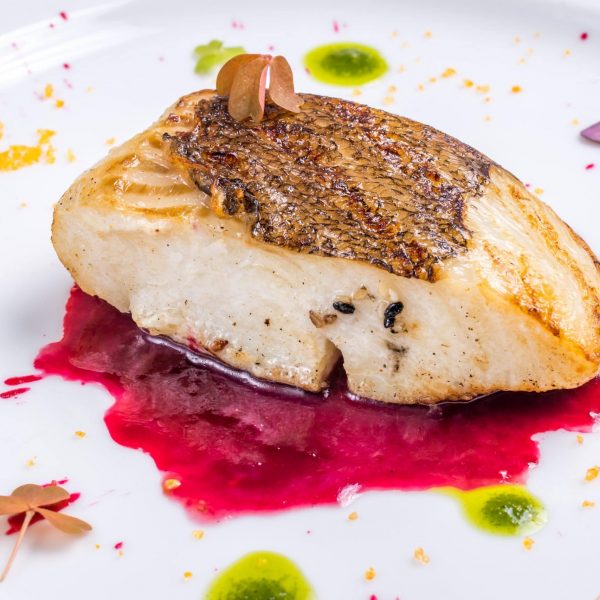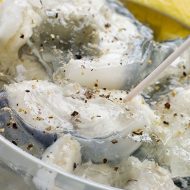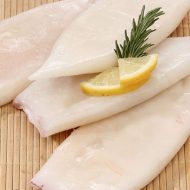They are the biggest flatfish in the South West, fast-growing fish that are normally large and strong! It holds a royal status along with the Dover sole and the lobsters. Turbot’s texture resembles halibut, but it has a much distinct and prominent flavour. Therefore, it does not require much seasoning to improve the taste. They are considered versatile fish as they can be cooked in various ways, such as poached, roasted, pan-fried and steamed.
Processing Turbot
The Turbot is individually processed and frozen in a matter of hours after capture to maintain the best quality and preserve its natural flavours and nutrients. The fish is frozen instantly, either on sea or on land, at shallow temperatures to avoid ice crystals from forming. The fish is sliced into fillets, packaged in pairs, and blast frozen. Other portions are available to be further processed into soups, frozen meals or specialised products.
Benefits Of Frozen Turbot
Frozen Turbot has a tender texture and a mild taste, good for baking and sautéing. Turbot is an outstanding source of protein and Omega 3 oils, which is a huge benefit. Turbot is a valuable fish that is easily digestible and low fat: hence it is suitable for a low-calorie diet.
It also contains vitamins, such as B3 and B12, and minerals, like potassium, iodine, phosphorus, magnesium and calcium. Phosphorus is necessary to protect teeth and bones, while iodine is essential for the proper functioning of thyroid hormones.
Calcium is critical for the development and wellness of teeth and bones. At the same time, potassium helps maintain normal blood pressure and can reduce the risk of recurring kidney stones and the risk of bone deterioration during old age.
Why Buy Frozen Turbot From Us?
Frozen Fish Direct delivers high-quality fish and seafood products, including Frozen Turbot. In collaboration with top-quality fishing partners, we offer great seafood items right from the Atlantic Ocean.
We only procure premium large fish, which gives our Frozen Turbot fillets a thicker and smoother texture. Turbot is a substantial and meaty fish that lends itself very well to various cooking techniques like pan-frying, roasting, steaming and poaching.
With mild sauces, such as veloute or hollandaise, Turbot continues to be the real star.
Frozen Turbot Nutritional Facts
An 85-gram or a 3-ounce serving of cooked Turbot fillet provides:
Calories: 100
Calories from Fat: 27
Total Fat: 3g
Cholesterol: 55mg
Sodium: 160mg
Carbohydrates: 0g
Fibre: 0g
Protein: 18g
Calcium: 20mg
Iron: 0.2mg
FAQs
What is the distinction between Turbot and Halibut?
Halibut is the biggest flatfish and they are also right-eyed. They seem to have a chocolate or olive colour. The underside of the turbot is white but maybe cloudy or greyish. Turbot is a left-eyed flatfish, with a spherical body.
Is turbot a bony fish?
It's a flatfish with its eyes generally on the left side, and also scaleless, but its body is filled with several bony points.
Are turbot fish oily?
Turbot is a low-fat white fish, making it one of the better, low-fat options to red and processed meats, which appears to have a higher fat content, particularly saturated fat. This fish contains lower amounts of omega-3 fatty acids than the oily fish variants.
Do you eat the skin of turbot?
Usually, the skin is removed before cooking. If desired, keep the turbot fillet on the bone when frying or roasting to produce the desired results.
How do you prepare and cook Frozen Turbot?
You can cook the Turbot from frozen, just pre-heat the oven for 12 to 18 mins. Brush the fish portions with preferred oil and put them in the baking pan, skin facing upwards. Mid-height inside the oven and bake for 15 to 18 minutes. You can pan fry the frozen turbot as well. Cook with a bit of oil in a hot frying pan to set the skin. Turn them halfway and continue cooking for around 6 to 9 minutes on the other side.












